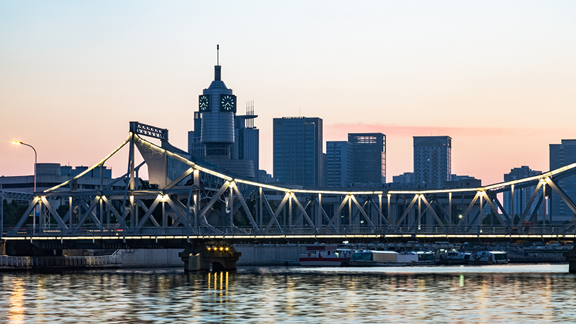
We just participated in a debate entitled “Urbanization: Testing the City Cluster Model” at the 2018 Boao Forum for Asia Annual Conference in Hainan. All panelists agreed that integrating cities and urban systems in coordinated city clusters is a global challenge for the 21st century.
Cities are the world’s economic engines, and also the largest source of pollution and greenhouse gas emission. About 66 percent of people are expected to live in cities and city clusters by 2050, with 90 percent of future urban growth taking place in Asia and Africa.
City clusters are known elsewhere as mega-regions, metropolitan functional areas, urban and economic corridors, and city networks. Examples include the northeastern United States between Boston and Washington, DC; the Tokaido Megalopolis or Pacific Belt in Japan; and the Manchester–Milan Axis or “Blue Banana” in Western Europe.
For decades, large and smaller cities in the same vicinity have grown together into vast territories marked by urban development and in many cases by urban sprawl. Uncoordinated development has led to unsustainable, carbon-extensive and non-resilient regional and urban development patterns and lifestyles, resulting in poor service delivery, as well as inefficient land and resource use.
The key obstacle city clusters face all over the world is fragmentation. Too often, multiple administrative entities coexist within clusters. The chimerical amalgamation of authority and responsibility causes too many mega-cities across Asia to suffer from pollution, congestion and poor service provision and massive economic losses.
To overcome the governance challenge, institutionalized city-cluster government with authority over planning, investments and management of connectivity infrastructure is essential. Effective city cluster governance unleashes a range of benefits. Improved connectivity enables an integrated labor market and makes possible reasonable daily commute times for workers across these very large regions. Articulation of industry clusters enhances competitive advantage through better coordination of economic and tourism marketing, also improving the wider region’s economic performance.
City clusters can be more sustainable, livable, inclusive and competitive. They can comprise larger and smaller cities and districts linked by intercity rail transit. In turn, coordinated regional open space systems can be planned with parks, farmland, forests, river estuaries and wetlands, providing multiple ecosystem services.
The extent of planned city cluster development in China is more than other countries. The 13th Five-Year (2016-20) Plan includes a total of 19 city clusters, many of which are as large as European nations. China has very strong national and municipal governance systems that have produced robust infrastructure and efficient public services. The challenge will be to create strong institutions to enable similarly good governance at the city cluster level.
Continuing rapid urbanization is one of the key challenges facing Asia in the coming decade. As urbanization accelerates across Asia and the Pacific, city cluster coordination and metropolitan governance have become key policy issues. Asian Development Bank will play its part in building cities across the region that are livable, resilient, inclusive, green and competitive.
(Stephen P. Groff is the Asian Development Bank’s Vice President for East Asia, Southeast Asia, and the Pacific. Stefan Rau is a Senior Urban Development Specialist at ADB’s East Asia Department.)


